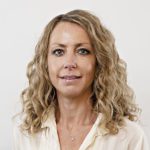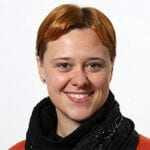Skin and bone development in Atlantic salmon (Salmo salar) influenced by hatchery environment
Publikasjonsdetaljer
Tidsskrift : Aquaculture , vol. 544 , p. 1–18 , mandag 15. november 2021
Utgiver : Elsevier
Internasjonale standardnummer
:
Trykt
:
0044-8486
Elektronisk
:
1873-5622
Publikasjonstype : Vitenskapelig artikkel
Lenker
:
DOI
:
doi.org/10.1016/j.aquaculture....
Forskningsområder
Fisk i oppdrett
Havbrukssystemer
Har du spørsmål om noe vedrørende publikasjonen, kan du kontakte Nofimas bibliotekleder.
Kjetil Aune
Bibliotekleder
kjetil.aune@nofima.no
Sammendrag
Recirculating aquaculture systems (RAS) are receiving greater attention because they have potential to reduce the use of water, enable better control of environmental conditions and give greater biosecurity. However, little is known about the effects of conditions in RAS on early development. Here we compare the survival, development and gene expression of Atlantic salmon grown in a RAS and flow through (FT) system from egg until before they start to feed (at around 875°d). The epidermis of RAS fish was significantly thinner and contained larger numbers of mucosal cells, which were positioned more toward the skin surface, and less mineralisation of the vertebral body, than FT fish. Genes known to be involved in bone development and mineralisation were significantly up-regulated (inner ear specific collagen, transforming growth factor-beta-inducible early growth response protein 3 and salmon calcitonin) or down-regulated (metalloproteinase inhibitor 2-like, 25-hydroxyvitamin D3 1-alpha-hydroxylase and elongation of very long chain fatty acids protein 7-like) with RAS relative to FT treatment. Genes known to affect skin development, including keratin type I cytoskeletal 13-like and angiopoietin-related protein 7, were down-regulated in RAS compared to FT treated fish. Although no two RAS will share exactly the same environmental conditions, our comparison shows that early development of the skeleton and skin is hindered by the environment of the RAS used in this study and that a number of related genetic processes influencing skin and skeletal development are affected. These differences could affect the robustness of salmon at later life stages.




